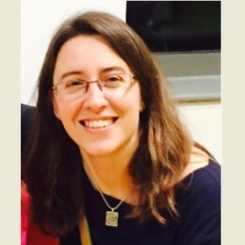Advanced Numerical Simulations in Geotechnical Engineering II
A special issue of Applied Sciences (ISSN 2076-3417). This special issue belongs to the section "Earth Sciences".
Deadline for manuscript submissions: closed (30 November 2023) | Viewed by 8278
Special Issue Editors
Interests: soil dynamics; soil–structure interaction; liquefaction; ground improvement; offshore wind turbines foundations; landslides
Special Issues, Collections and Topics in MDPI journals
Interests: computational mechanics; solid dynamics; mathematical modeling and computing; meshfree methods; geotechnical engineering
Special Issues, Collections and Topics in MDPI journals
Special Issue Information
Dear Colleagues,
Soils are very complicated materials. They are formed by particles that have different properties, sizes, and shapes, which interact with each other mechanically and chemically. Moreover, the voids left by the particles can be filled with a combination of fluids and gases, which highly affect the overall mechanical soil behaviour. Different approaches to simulate soil performance when subject to loads can be adopted, including from macro- to micro-structural analyses. All of these possible numerical models pose challenges that need to be addressed in order to balance stability, accuracy, and efficient simulations.
This Special Issue is open to advanced numerical simulations in soil mechanics and geotechnical engineering. We aim at publishing contributions on novel numerical schemes, including new constitutive models, particulate soil mechanics, unsaturated media, and soil dynamics. Practical applications of these advanced approaches to real civil engineering problems are particularly welcome.
Dr. Susana Lopez-Querol
Dr. Pedro Navas
Guest Editors
Manuscript Submission Information
Manuscripts should be submitted online at www.mdpi.com by registering and logging in to this website. Once you are registered, click here to go to the submission form. Manuscripts can be submitted until the deadline. All submissions that pass pre-check are peer-reviewed. Accepted papers will be published continuously in the journal (as soon as accepted) and will be listed together on the special issue website. Research articles, review articles as well as short communications are invited. For planned papers, a title and short abstract (about 100 words) can be sent to the Editorial Office for announcement on this website.
Submitted manuscripts should not have been published previously, nor be under consideration for publication elsewhere (except conference proceedings papers). All manuscripts are thoroughly refereed through a single-blind peer-review process. A guide for authors and other relevant information for submission of manuscripts is available on the Instructions for Authors page. Applied Sciences is an international peer-reviewed open access semimonthly journal published by MDPI.
Please visit the Instructions for Authors page before submitting a manuscript. The Article Processing Charge (APC) for publication in this open access journal is 2400 CHF (Swiss Francs). Submitted papers should be well formatted and use good English. Authors may use MDPI's English editing service prior to publication or during author revisions.
Keywords
- meshfree methods
- DEM
- time integration schemes
- soil–structure interaction
- soil–structure interface
- constitutive modelling
- construction sequences
- Biot’s equations
- modelling of unsaturated soil mechanics
- large deformation modelling






